I get this question a lot, and it’s a good one: “So, I’m not eating any gluten, but am I getting enough nutrition in my diet?”
I addressed this issue on The Gluten-Free Voice Radio Show with my guest, Rachel Begun, a registered dietitian living with celiac disease. Rachel is a national spokesperson for the Academy of Nutrition and Dietetics, a Scientific/Medical Advisory Board Member for the NFCA and a visiting instructor at the Institute of Culinary Education in New York. She is regularly interviewed on the GF diet by major news media, including ABC News, Fox News, USA Today, The Huffington Post, U.S. News & World Report and O The Oprah Magazine.
Below is the podcast link to hear this episode, or read the transcript on this page.
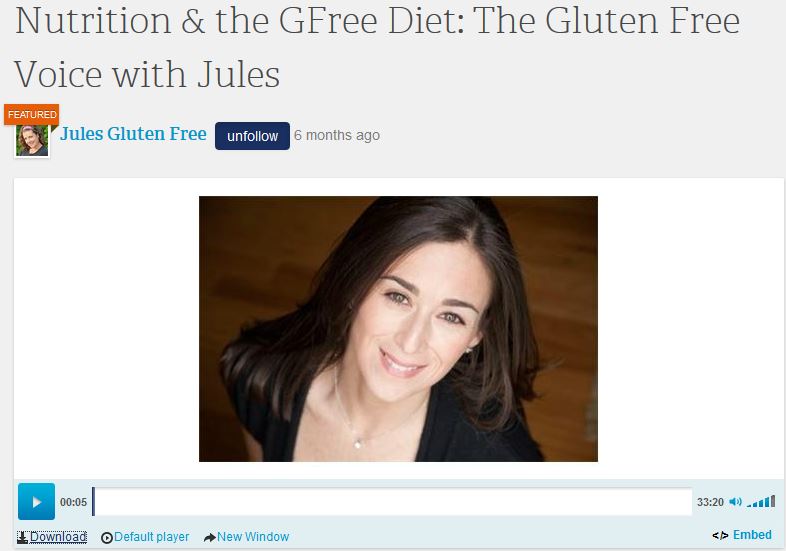
Jules: Hello and welcome to the Gluten-Free Voice. I am your host, Jules Shepard, with Jules Gluten-Free, and I’m really pleased today to have a special guest to talk about something that we touch upon a lot on this show, but haven’t really dedicated an entire show to it, and that is gluten-free nutrition.
How do you actually live on a strictly gluten-free diet and live well, not just feed your sweet tooth, but actually get some nutrition in there and do it tastefully and not break the bank at the same time, so I’m really pleased to have Rachel Begun on the show today. Thank you, Rachel, for joining me.
Rachel: Thanks for having me. It’s great to be here.
Jules: Rachel has a long, long, long list of qualifications to be the one I would be talking to on this show today, but a couple of the things I would just touch upon for her, Rachel is, like me, a diagnosed celiac and so we all have quite a different perspective on living gluten-free because we do it and have been doing it day in and day out out of necessity for a long time and that does actually kind of make us experts in the field of gluten-free. Anyone who’s living gluten-free like this really becomes their own expert in that. But Rachel also has a really fine background in nutrition and also as a dietitian as well. Rachel, just to start out so that the listeners can understand a little bit more about you, can you tell us when you were diagnosed with celiac disease and how that sort of happened in your life?
Rachel: Yes, absolutely. A lot of people ask me if I became a dietitian nutritionist because I have celiac disease, and the ironic thing is actually I was a dietitian long before I was diagnosed. I was probably one of your pretty typical cases where I was diagnosed as having IBS and lactose intolerance for a long time and eventually we figured out it was celiac disease, but my story really was I was diagnosed back in 2008, so not very long ago, but considerably, it’s been five years now, but for me …
Jules: It probably feels like a long time.
Rachel: Yes, it actually is a lifetime ago because how I experience my life and what I can accomplish is so much different than it was prior to being diagnosed. But for me, it didn’t make sense. My being a dietitian, somebody who was always eating healthfully, I always exercised. I just took care of myself. It just didn’t make sense that I was always tired. I was one of those people who slept all the time. I always had low energy, and it really just never made sense. But then there was a period right before I started the diagnosis and testing process where my GI symptoms really started to become very severe, to the point where I thought I was having multiple food poisoning attacks in a very short period of time, and when that happened, I knew something was much more serious, and that’s when I went to the GI doctor and started to go through the whole testing process. That’s when I was diagnosed.
Jules: You did not start a gluten-free diet prior to going to the GI and getting tested?
Rachel: Well, I actually played around with it in the sense of I didn’t go completely gluten-free, but I knew something was awry. The funny thing is I knew a lot about food allergies. I didn’t know as much about celiac disease, but I was what I would consider a food allergy expert because I had worked with a school food service provider and I had prepared an entire food allergy training program for their associates and I was pretty knowledgeable on the topic, although celiac disease wasn’t singled out amongst the food allergies. I started to realize something was going on, and I did play around with taking gluten out of my diet, but I didn’t fully take it out. I just started taking it out in bigger quantities and started feeling a little bit better when I did that. So it was an indication to me that I needed to go to the doctor and get tested for celiac disease.
Jules: Did you eat a lot of gluten before? Was that something that was a big part of your diet?
Rachel: I would say I went through phases in my life where I ate a lot more gluten than at other times, and I think that also explains why, in my life, I probably went through cycles of feeling really bad versus kind of being more under the radar, so I definitely had gluten in my diet. There’s no doubt about it, but probably not as much in my diet at certain times than at others.
Jules: As a dietitian as well, you probably had a whole lot of whole grains in your diet. I remember when I went through the same thing that you went through. I was diagnosed with IBS and lactose intolerance and just told to deal with the IBS for over 10 years, when I truly was actually celiac. And one of the things that they always told me was, “You need more fiber. Go eat some All-Bran.” I was poisoning myself, but I imagined that was a very healthy way of eating, to get more whole grains, eat whole wheat, and all that kind of thing, so I was just wondering if you subscribed to that for yourself as well. “I’m going to eat only whole grain pasta and whole grain breads and things like that.”
Rachel: Yeah, whole grains and fiber was a big part of my diet and I basically, like you said, I was giving myself the foods exactly what I wasn’t supposed to be eating, so I was focusing on, like you said, the wheat, the barley, oats, which at the time I wasn’t eating certified gluten-free oats, so yeah, that’s definitely an issue and basically, you’re giving yourself exactly what you don’t need …
Jules: An extra dose of it, actually.
Rachel: Exactly, yeah.
Jules: When you finally figured it out and you’ve got this background, you’ve got this training, you have the knowledge to know that “I know where gluten is” and I imagine there was some learning curve there with celiac, but as a dietitian, you probably were also again uniquely situated to think, “Oh my goodness, a gluten-free diet. Everything that’s been written about that seems to be that it’s very unhealthy. There’s not a lot of fiber. There’s not a lot of nutrition in the typical gluten-free diet, so what am I going to do—somebody who eats healthy and is used to whole grains and things like that?” Did you go through an awkward transition where you were trying to fill that void to change your diet?
Rachel: Oh, absolutely. When I was first diagnosed, my first thought to myself was, “Oh, I know what contains gluten. It will be so much easier for me than everybody else because I know what foods contain gluten and I can avoid it,” but really, when it came down to it, I started realizing that this transition of completely … I had gone all these years of my life. I was 37 when I was diagnosed. I’d gone all these years in my life eating a certain way that I thought was healthy, and to have to completely change that was much more difficult than I first thought and emotionally, it was difficult.
So yes, I went through a good six to nine month period where I almost felt lost about what my diet was supposed to look like. Now I was eating a lot more meat and fish and poultry than I had ever eaten before. I was probably a lot more vegetarian and I was going away from being … I was never a full-on vegetarian. I just ate a largely plant-based diet and then I started going away from that, so yeah, there was a period where I felt lost and not really knowing where my diet was supposed to land.
Jules: I imagine for those listeners out there who are fresh off the transition to a gluten-free diet, that probably gives them a little heart to know that they’re not the only ones going through that difficult time because I’ve spoken with lots of physicians as well, and when they’ve been diagnosed with celiac disease and other dietitians and nutritionists, when they’ve been diagnosed, they probably do kind of feel like, “I’ve got this,” and then all of a sudden, “No, I don’t got this.” It is a hard transition for anyone, even if you’re really in the food business and you know a lot about diet and nutrition. It’s really kind of a game changer to put on that gluten-free hat and figure out what you can really eat.
I think just through years of talking to other people who have gone through this and in researching for the second book I wrote, which was on the transition to celiac disease and living gluten-free, that research really led me to the conclusion that there is a definitive, I guess, cycle that you go through after the diagnosis, whether you’re someone like you who knows a lot about food or someone who doesn’t. I think it starts with a bit of grief and it’s a loss of something that you’re experiencing, a loss of a lifestyle in some regards. Your favorite restaurant maybe you feel like you can’t go to with your friends anymore or your favorite whatever the recipe is or Thanksgiving’s never going to be the same.
There are these grief patterns that really present themselves when you’re diagnosed with a food allergy or celiac or even gluten intolerance where you finally realize there’s some big change in your life like this, it hits you. At first, sometimes you think you can do it, and then all of a sudden, you realize it’s everywhere and it permeates every part of our lives as social beings, that food is everywhere, and it’s hard, even if you know what you’re doing. It’s hard, and I think what gets people through that is finding replacements for their favorite things that they used to enjoy and a lot of those end up being junky comfort foods.
Like, “I can’t have Oreos anymore,” now all of a sudden I want an Oreo, so people make that transition oftentimes and jump immediately into kind of really bad for you gluten-free food, and I think that’s where it’s really nice to have this background knowledge that you have bringing to the table that once they get over that, “I found the comfort food. I know if I need my Oreo fix, I can get a gluten-free Oreo, but now let’s figure out how to actually live the rest of our lives in a healthy gluten-free way, really balancing things out.”
I’m sure you probably got there a bit quicker than most of us, but you mentioned some of it. Eating more fish and poultry. Eating more vegetables. Things like that. What are some of your favorite tricks to get by when you’re making your menu plan for the week or if you’re hungry in the afternoon and need some snacks? How did you make that transition successfully for yourself where you didn’t feel like you were missing out, but you were still getting the nutrition that you needed on a gluten-free diet?
Rachel: Before I want to jump in and talk about the actual foods, I think something that’s really important that I like to share is that, yes, as somebody who counsels people with celiac disease or gluten sensitivity, often the first question is “Where can I get that gluten-free cookie?” or “Where can I get that gluten-free cupcake?” and everybody, myself included, we are all entitled to our occasional treat foods and that’s important, but I always try when I’m talking about nutrition and celiac disease or gluten-related disorders, I always try to emphasize the importance of eating a wholesome, nutrient-rich diet, especially when you’re first diagnosed.
The reason is with celiac disease, some people have gone for years, some people maybe even decades where they have been malabsorbing nutrients, and the whole key to recovery with celiac disease is taking gluten out of the diet so your intestines can heal and so that you can start to absorb nutrients, but what is really important for people to realize is that when you eat a nutrient-dense diet and you’re eating wholesome foods, your intestines will heal a lot more quickly and you will get on the road to recovery quicker, so I really try to emphasize with people the importance of eating wholesome foods when you first go gluten-free because it really has a huge impact on your overall health and how quickly it takes to get back to recovery.
With that said, I really like to focus on naturally gluten-free foods, like I was mentioning these whole nutrient dense, what I would call naturally gluten-free foods. There are so many foods out there that we recommend to the entire population whether you have celiac disease or not that are what we consider the foods you should be eating on a regular basis. Those are things like fruits, vegetables, low-fat dairy, gluten-free whole grains, plant-based proteins like beans, nuts, seeds, eggs, fish, and then moderate amounts of meat and poultry. These are the foods we should be really focusing on, on an everyday basis, and then, of course, the gluten-free cookies and the cakes—those kind of things—should be eaten on occasion as treat foods.
Jules: There’s something on your website that I really liked and the quote was “Enjoying food is essential to lifelong healthy eating habits.” There’s a lot to that. I think part of that is the first piece, enjoying food. Don’t deprive yourself entirely of things that you think are bad for you. Like if you do want a cookie, have that cookie, but realize you’re not going to survive on cookies. You need to have a wholesome diet, and then the cookie can be there as well. And then also the lifelong healthy eating habits.
This is really the diagnosis of celiac disease for me, and I think for so many people who find out that they have gluten-related disorders, they have an opportunity to really take control of their diet as a means to better health without prescriptions, which I think is such a blessing, and finally, start actually reading those nutrition labels that so many of us don’t read for so long when you don’t have to, if you don’t have a food allergy or a restriction or diabetes or something that requires you to read those nutrition labels. You just don’t and so when you have to, you realize what you’re getting out of your food and what you’re not getting out of your food, so it does really train you to have better lifelong healthy eating habits.
I think it’s a positive to me because I know I rarely read nutrition labels before I was diagnosed and if I did, it was just to see the fat content. I wasn’t really getting into the bare bones of what ingredients were there and what I was getting and what I wasn’t getting. I think if you look at it from that perspective and say, “I’m not going to totally deprive myself of cravings that I have or at Thanksgiving, I’ll still enjoy that pumpkin pie and maybe a slice of apple pie as well,” but to really enjoy this life change as an opportunity to learn healthy eating habits.
Rachel: You make a really good point because I know so many people who have become much more educated about what goes into their food after they’ve been diagnosed with celiac disease or even a food allergy. Anybody who has to, like you said, very diligently read labels, you start to naturally have a better understanding because you have to read about these ingredients that you never knew what they were before, and now you have to know what they are and whether you can have them and kind of at the same time, you learn about the nutrition status of these ingredients as well, and I work a lot with food manufacturers and food service providers and I always say to them, “You have to be very wary of the gluten-free consumer because they are a very highly educated food consumer because they have to read ingredient labels, so they often wind up improving their diets from a nutrition perspective as well, not just from a perspective of removing gluten.” That’s the first thing.
The second thing is people hear, and everybody goes through their whole emotional part when they’re diagnosed. We’ve all gone through it. It’s not ideal, but what I tell everybody is it’s not a culinary death sentence. It’s not the end of being able to enjoy food. I’m not going to trivialize the fact that going out to eat at restaurants is a whole … There’s a whole different ballgame out there when it comes to eating out. We all know that, but it’s not a death sentence in the sense you can’t enjoy food and really, what I have found is a lot of people, your food horizons wind up expanding because you now have to look at different ingredients if you want a varied diet and that’s a good thing.
I, personally, was always into food and nutrition and cooking, but after being diagnosed even more so. I feel like you become not just a better educated consumer, you just become a better food consumer as well and you have almost more at your disposal because you’re looking at it through a different set of eyes.
Jules: Sure, and I think when I tell people this fact, everybody raises their eyebrows like, “Are you sure about that?” but I think it’s a really interesting fact. There are more gluten-free grains out there than there are grains that contain gluten, so it sounds weird until you really think about it, and the problem is that there’s wheat everywhere. Wheat is just what you use when you can have gluten, and when you go gluten-free, you start looking for wheat substitutes and flours, and it’s amazing what’s out there. It’s exciting, too, in a lot of ways if you’re the kind of person like me who likes to experiment.
If you’re not able to or don’t have that proclivity or don’t have the time, there are blends and things that you can use obviously that fix it for you, and they’re gluten-free and you don’t have to experiment with anything and that’s great to have, but it’s also fun, every once in a while to find some funky new gluten-free flour and experiment with it. You can’t just use one gluten-free flour as a substitute for wheat, so you have to blend it with other things, but it’s always really fun to experiment and see what happens. Last summer, I started working with whole grain millet, for example. I really just thought I hadn’t played with millet and what the heck does that taste like? I found that the whole grain millet, the little balls of millet, are super fun to throw into muffins, for example, so if I’m making a muffin recipe and you put the whole grain millet in there, it’s like a little magic crunch.
Rachel: It’s crunchy.
Jules: Yeah, and it’s super fun. It’s unexpected and adds another of taste and texture to the muffins, so now it’s one of my favorite things to put into any kind of muffin that I make and, by the way, it’s healthy, so it’s fun to look around, and like I said, if I wasn’t gluten-free, why would I ever buy millet? I would never have known that this is this really neat thing you can add even if you’re not gluten-free to a muffin recipe to make it fun and different and tasty, so I look at it as an opportunity and I think once you do your sort of mental shift and you realize that, like you said, it’s not a death sentence culinarily speaking, that there are a lot of opportunities to be healthier but also to experiment with some really neat new foods that maybe you wouldn’t have looked around for before.
Rachel: Yeah, absolutely. I totally agree. I just look at my breakfast options. I was pretty much an oatmeal girl every single day and I’m not talking gluten-free oats, regular oats. Every single day, that’s what I was having, but now for breakfast, I’ll have quinoa, I have millet for breakfast, I have [inaudible 00:20:47] for breakfast in addition to eggs sometimes, but just the amount and variety that I choose from now is much greater, so yeah, and you know what? It is a lot more fun and also, one of the key recommendations I make to people—you do have to give them a little bit of a reality check and I always say to them, “Listen, I want you to focus more on your eating at home because you’re not as familiar with how to avoid gluten when you’re outside the home.”
I really try to encourage them to start making more food at home and spending more time in the kitchen at home and the first thing I always say is, “If you just get some basic cooking skills, the way you can approach the gluten-free diet is going to be so different. You’re going to have so many more options and variety at your disposal.” When people start to learn to make their own food—again, it’s not just about avoiding gluten—they’re probably going to wind up eating more healthfully, too, because they’re in control of the ingredients that they’re putting into their food.
Jules: I hear that all the time as people are really afraid to get into the kitchen because they’ve never had to because we have become such a society of there’s been two breadwinners in so many families and people don’t have time. It all started out with the microwave meal and then it went to fast food and then there’s take-out now. There’s still just so many people who don’t feel that they have confidence in the kitchen, and you have to take that first step, and it makes it so much easier to live gluten-free if you have at least a few things that you can make in the kitchen yourself for your family, even if it’s just a couple meals a week that you start out with and then you sort of branch out into some new different things.
You might actually find that it’s super fun and that you have the knack for it. One of the neat things that I’ve found and I’m sure you hear this in your practice, is that so many people never have the joy of cooking together as a family, and if it’s anything from rolling out sugar cookies to making homemade pizza, people have never done those things, so when you actually bring that back home into the kitchen and you make a homemade gluten-free pizza dough and the kids spread the dough and they get to decide what they want to put on it and they top the pizzas and all that, it’s a family experience that is forming memories and just really a bond that is really hard to replace. People have sent me pictures of their kids doing all these things and said, “I never knew what we were missing out on as a family, not just sitting down and eating together, but making the food together.”
Of course, as you said, then you’re in control of the ingredients. With pizza, for example, I encourage people to think of pizza as a plate. What are you going to put on your plate? Anything you want. It doesn’t have to be mozzarella and pepperoni. It can be anything and certainly one of our favorite things to do is grill tons of vegetables once a week and then we repurpose them throughout the week by having vegetable pizza, by having quiche, by having quinoa and vegetables throughout the week, so we just really think of those things as our plates and what do we feel like putting on them. When you break out of the mold like that, you start thinking really creatively and you come up with ideas maybe nobody has ever had at a pizza restaurant before and you’re making it in your home for your family and they love it.
And, if the kids are helping to do it, they’ll actually eat it. Making homemade ravioli and the kids stuff the ravioli, they’re going to want to eat the ravioli as before maybe they wouldn’t have been so adventurous to eat ravioli with something other than cheese in it. There are so many opportunities, I think, that if you have the right mindset, you can embrace and live healthier and happier because of the dietary shift like this.
Rachel: Absolutely, and I love the point that you make about cooking as a family, and a couple things that I just want to add there is everyone says that they don’t have time to cook, and I always say to them, “Okay, what do you do after you eat dinner at night?” and almost everybody always says, “We have some television time and we’ll spend some time with the kids doing their homework.” I’m like, “Okay, so you’re rushing through dinner so that you can watch television. How about spending quality time with your kids, making the dinner, you can cut out a little bit of the TV time because we all know that’s really not that important, so you do have time. It’s just a matter of making it a priority and rethinking how your day is going to look, but you do have time to cook.”
It’s just a matter of making it a priority and oftentimes, you throw the television time away or at least you minimize it, and you can make time to cook dinner. Another thing that I mention is you don’t have to be a culinary gourmet. You don’t have to be a gourmet chef. You can eat very healthily while preparing simple foods that are not hard to make. It’s just a matter of like you said, getting over that hump and having a confidence to know that good food does not have to be gourmet by any means. I consider myself a good cook. By no means do I consider myself a chef or a culinary gourmet, but just because I have a passion for it, I can make simple but really delicious meals.
Jules: There are so many blogs and recipes and Facebook pages and things all over the internet now with wonderful recipes. Pinterest is wonderful for that, too. You hop on there and you can get the best ideas for dinner tonight or for planning your weeks of meals next week, and especially like right now in the summer where we are, going to the farmer’s market. I noticed on your website, one of your hobbies and your passions is going to the farmer’s market. I look forward to that all week long. I just cannot wait to go to the farmer’s market. What are they going to have for me this week, you know?
For example, this week I went and they had just an overabundance of green tomatoes and normally, I’m lucky to get a couple of them for my fix of fried green tomatoes, so I found all these green tomatoes and so I decided I’m just going to invent green gazpacho this week. I made the most delicious green gazpacho. I threw in zucchini and peppers and, of course, the green tomatoes, and rosemary and mint, and I just started throwing stuff into the food processor and tasting it, and then like, “Oh, it could use a little more of that.” It was so delicious. It was because I went to the farmer’s market and they had tons of green tomatoes, so I was inspired to make something because of that, so be open to receiving those inspirations as well and I think you’ll find all kinds of really neat opportunities.
Rachel: Absolutely. You just took the words out of my mouth. Every week when I go to the farmer’s market, that’s my inspiration and I don’t necessarily always work from a recipe, and not because I’m somebody who can just throw food together, but it’s just sometimes a little bit intuitive. At our farmer’s market, as we talked about, I just moved to Boulder, Colorado, and I was so excited to go to the Boulder Farmer’s Market for the first time and I was like a kid in a candy store, literally. We passed a vendor that had gluten-free—fresh, gluten-free pasta, not dried pasta, but fresh gluten-free pasta which anybody who has to avoid gluten knows that fresh pasta is not really an option that’s available to you all the time, so I got the gluten-free pasta.
I’m like, “Hmm. Well, what are we going to make with this?” Right at the stall next door was a local mushroom provider and they had these mixed bags of all types of mushrooms, so literally all we did was sauté these mushrooms in olive oil, and that’s all that it needed, and that was the topping to the pasta, and then I made this carrot and cabbage salad and literally every single ingredient came from the farmer’s market. It was not hard to make at all. It didn’t require a recipe. It didn’t require any formal training.
Jules: Yeah, and I’m glad you mentioned the fresh pasta because I’ve actually started—I go to Expo every year, East and West — and I’ve started to see that fresh gluten-free pasta that they’re actually distributing nationwide. I saw it when that came out two years ago, and I was so eager to see when it was actually going to filter its way into the stores, and I started to see it in some stores near me. So people should start looking for that because it really is so good to have the fresh pasta. But there are also some new pastas on the market that are made just with legumes, so it’s just black bean pasta, for example, and that takes pasta to another level in terms of nutrition because a lot of people feel like pasta is vacuous and it doesn’t have it and it’s all carbs and it doesn’t have any nutrition.
These black bean pastas are really, really good and they add flavor to the meal as well, so you can just top them more simply than you would with a heavy-handed marinara and it’s a neat opportunity, and it doesn’t take an expert to boil pasta. Looking around for different options like that and I think you’ll find some really neat stuff. Spaghetti squash. My kids love when I make spaghetti squash because all you do is cook it, either in the oven or boil it or put it in the microwave, if you wanted to do that, and then you comb through it with a fork, which the kids think is the funniest thing ever. They’re combing their own pasta, and then you top it just like you would any other pasta, so there’s some really neat kinds of things that you can do that really don’t take any skills but are kind of fun and different and novel.
What if you had a dinner party and you impressed them with this black bean pasta that you made or whatever? That’s different. It’s unusual. It’s neat and it also happens to be nutritious, so look around for those kinds of options. Luckily because gluten-free is a buzz word lately, there are more manufacturers who are trying to get into the mix and we will be hopefully seeing more and more that will offer some nutritional value as well. I’m sure you’re on the cutting edge of those types of things as well. I hope we’ll be seeing more products out in the future that have higher nutritional content than some of the stuff that’s been out for a while.
Thank you so much for taking the time to talk to us about some of the ideas that you have about making the transition and doing it in a healthy and happy way. It’s been a pleasure to finally get to talk to you. You and I have chitchatted over Twitter for a while and I’ve been following you, and you’ve got some really great information, so please share your blog and Twitter handle if people would like to get a hold of you.
Rachel: Sure. Well, first of all, thank you for having me on. I know, it’s nice to finally chat in person and share ideas. We obviously both have a love for fresh cooking and all that kind of stuff, so it’s been great to be on. The best way people can find me is on Twitter at Rachel Begun, R.D., and that’s @RachelBegunRD, or my blog which is www.glutenfreerd.net, so that’s where I’m putting out a lot of information. Also, if you go to RachelBegun.com which is my website, you can connect to some of my other social media outlets like Facebook and Pinterest where I share information and recipes, so all those are ways to get in touch with me and I appreciate any kind of dialogue or questions, and I’m happy to help.
Jules: Great. Thank you again for your work and for your contribution to our community. I look forward to hearing a lot more good things from you now that you’re in Boulder, one of my favorite places on earth, so we’ll have to keep track of you. I want to see all your good new pictures from your hikes and things. So thanks again for your time.
Thank you all for listening. You can check out other podcasts of all kinds of different topics on my website which is blog.julesglutenfree.com. If you click the “Jules On Air” Tab and you go to the “Radio” Tab, there are tons of podcasts from the years that I’ve been doing this, so everything from informative nutrition information from people like Rachel to how to buy gluten-free beer, so there are plenty of topics out there you can download and listen to any time.
Have a great and healthy day.
Podcast transcription by www.rev.com
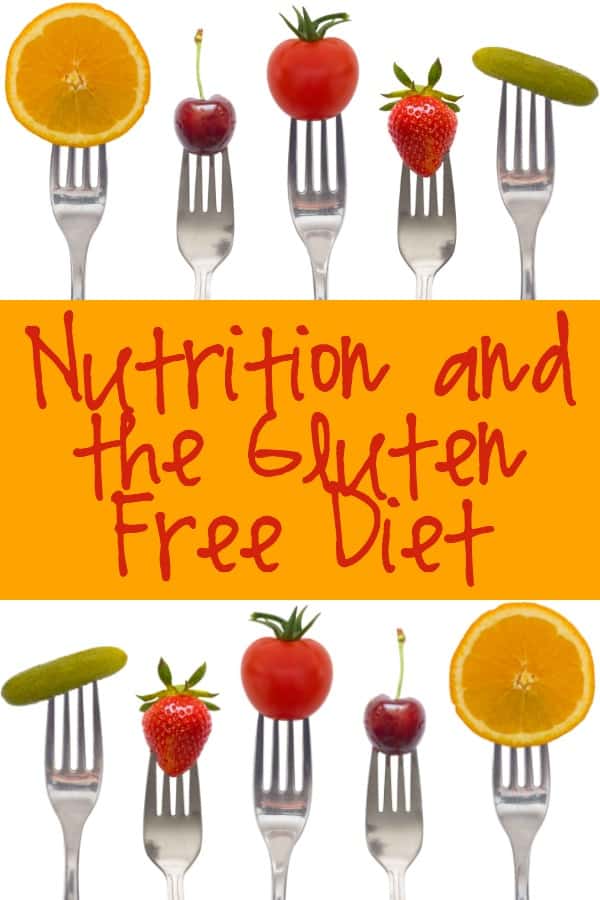


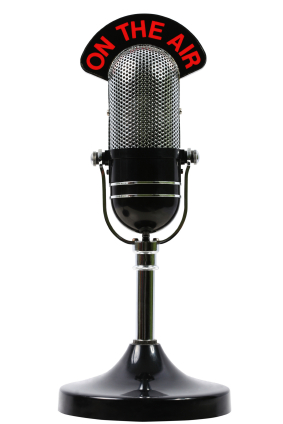
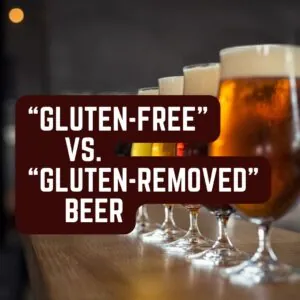


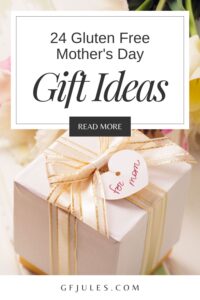













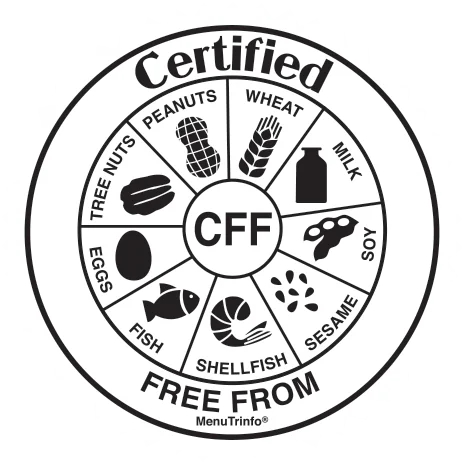
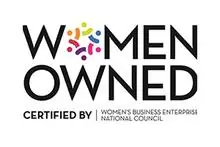

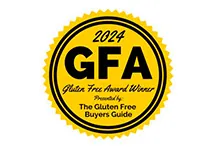
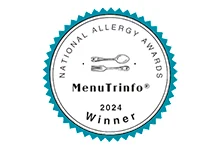
Good post.
The most important thing is to make sure you make healthy lifestyle changes which are sustainable in the long-term and AVOID following fad diets.